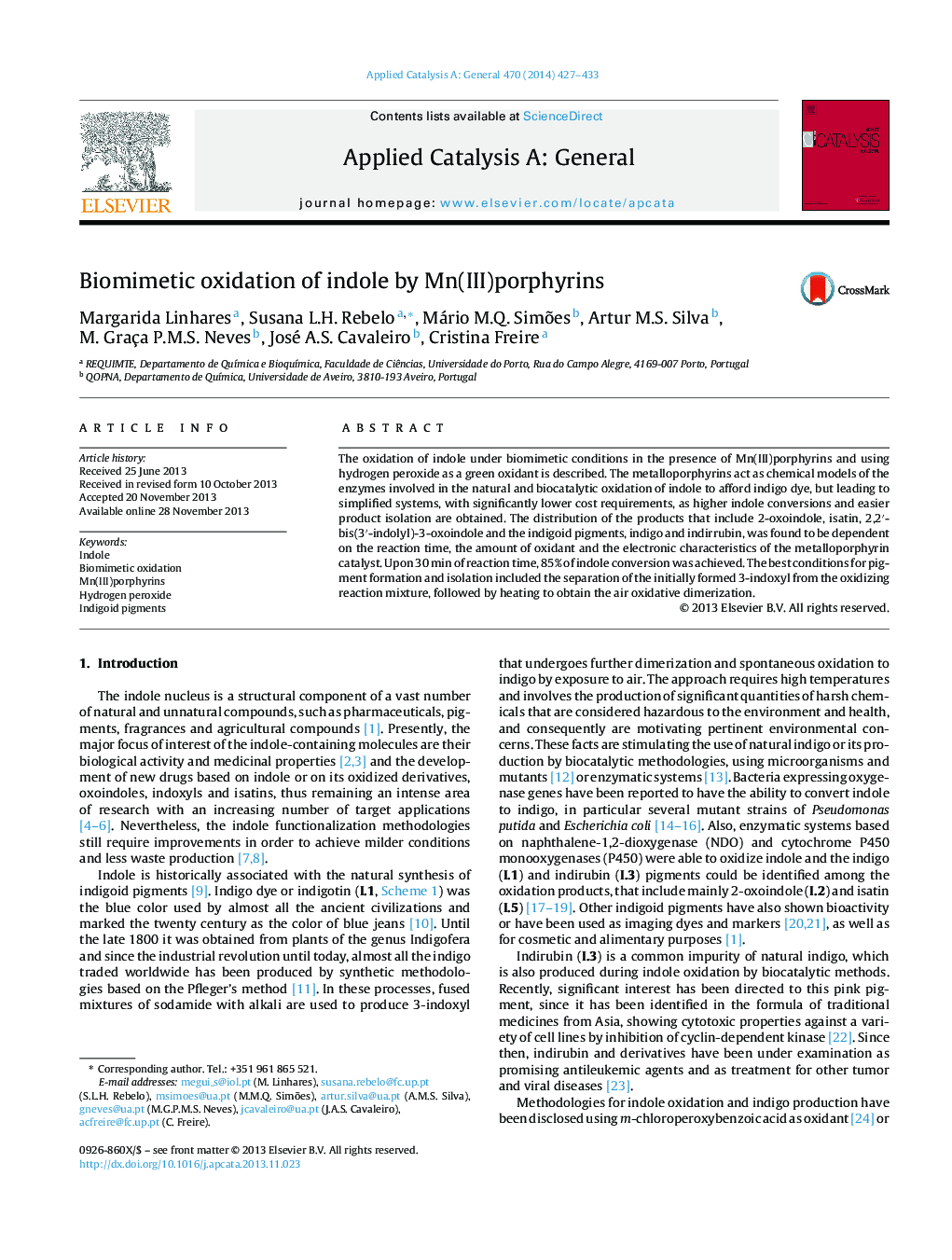| Article ID | Journal | Published Year | Pages | File Type |
|---|---|---|---|---|
| 40021 | Applied Catalysis A: General | 2014 | 7 Pages |
•Indole is oxidized by H2O2 in the presence of Mn(III)porphyrins in mild conditions.•The biomimetic oxidation of indole can replace biocatalytic and natural processes.•Optimization of the reaction allowed the isolation of indigo and indirubin pigments.•2-Oxoindole, isatin, indoxyl and other coupling derivatives were produced.•The reaction has relevance for biomedical studies and dye industry.
The oxidation of indole under biomimetic conditions in the presence of Mn(III)porphyrins and using hydrogen peroxide as a green oxidant is described. The metalloporphyrins act as chemical models of the enzymes involved in the natural and biocatalytic oxidation of indole to afford indigo dye, but leading to simplified systems, with significantly lower cost requirements, as higher indole conversions and easier product isolation are obtained. The distribution of the products that include 2-oxoindole, isatin, 2,2′-bis(3′-indolyl)-3-oxoindole and the indigoid pigments, indigo and indirrubin, was found to be dependent on the reaction time, the amount of oxidant and the electronic characteristics of the metalloporphyrin catalyst. Upon 30 min of reaction time, 85% of indole conversion was achieved. The best conditions for pigment formation and isolation included the separation of the initially formed 3-indoxyl from the oxidizing reaction mixture, followed by heating to obtain the air oxidative dimerization.
Graphical abstractFigure optionsDownload full-size imageDownload high-quality image (145 K)Download as PowerPoint slide
